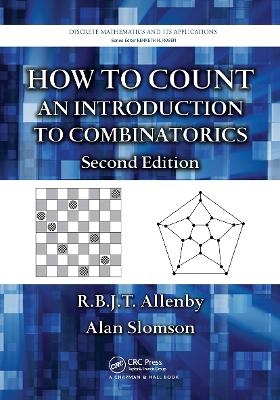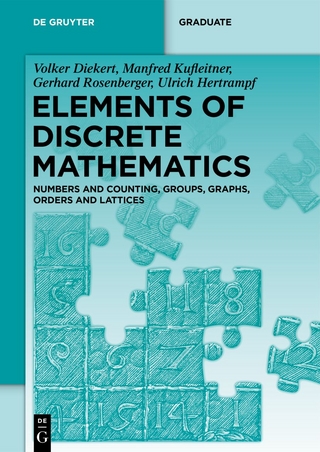
How to Count
An Introduction to Combinatorics, Second Edition
Seiten
2024
|
2nd edition
Chapman & Hall/CRC (Verlag)
978-1-032-91977-5 (ISBN)
Chapman & Hall/CRC (Verlag)
978-1-032-91977-5 (ISBN)
Completely revised, this text shows how to solve numerous classic and other interesting combinatorial problems. The authors take an easily accessible approach that introduces problems before leading into the theory involved. They present proofs of key results as well as numerous worked examples. This second edition includes seven new chapters th
Emphasizes a Problem Solving Approach
A first course in combinatorics
Completely revised, How to Count: An Introduction to Combinatorics, Second Edition shows how to solve numerous classic and other interesting combinatorial problems. The authors take an easily accessible approach that introduces problems before leading into the theory involved. Although the authors present most of the topics through concrete problems, they also emphasize the importance of proofs in mathematics.
New to the Second Edition
This second edition incorporates 50 percent more material. It includes seven new chapters that cover occupancy problems, Stirling and Catalan numbers, graph theory, trees, Dirichlet’s pigeonhole principle, Ramsey theory, and rook polynomials. This edition also contains more than 450 exercises.
Ideal for both classroom teaching and self-study, this text requires only a modest amount of mathematical background. In an engaging way, it covers many combinatorial tools, such as the inclusion-exclusion principle, generating functions, recurrence relations, and Pólya’s counting theorem.
Emphasizes a Problem Solving Approach
A first course in combinatorics
Completely revised, How to Count: An Introduction to Combinatorics, Second Edition shows how to solve numerous classic and other interesting combinatorial problems. The authors take an easily accessible approach that introduces problems before leading into the theory involved. Although the authors present most of the topics through concrete problems, they also emphasize the importance of proofs in mathematics.
New to the Second Edition
This second edition incorporates 50 percent more material. It includes seven new chapters that cover occupancy problems, Stirling and Catalan numbers, graph theory, trees, Dirichlet’s pigeonhole principle, Ramsey theory, and rook polynomials. This edition also contains more than 450 exercises.
Ideal for both classroom teaching and self-study, this text requires only a modest amount of mathematical background. In an engaging way, it covers many combinatorial tools, such as the inclusion-exclusion principle, generating functions, recurrence relations, and Pólya’s counting theorem.
Alan Slomson taught mathematics at the University of Leeds from 1967 to 2008. He is currently the secretary of the United Kingdom Mathematics Trust. R.B.J.T. Allenby taught mathematics at the University of Leeds from 1965 to 2007.
What’s It All About?. Permutations and Combinations. Occupancy Problems. The Inclusion-Exclusion Principle. Stirling and Catalan Numbers. Partitions and Dot Diagrams. Generating Functions and Recurrence Relations. Partitions and Generating Functions. Introduction to Graphs. Trees. Groups of Permutations. Group Actions. Counting Patterns. Pólya Counting. Dirichlet’s Pigeonhole Principle. Ramsey Theory. Rook Polynomials and Matchings. Solutions to the A Exercises. Books for Further Reading. Index.
| Erscheinungsdatum | 16.10.2024 |
|---|---|
| Zusatzinfo | 164 Illustrations, black and white |
| Sprache | englisch |
| Maße | 178 x 254 mm |
| Gewicht | 825 g |
| Themenwelt | Mathematik / Informatik ► Mathematik ► Graphentheorie |
| ISBN-10 | 1-032-91977-9 / 1032919779 |
| ISBN-13 | 978-1-032-91977-5 / 9781032919775 |
| Zustand | Neuware |
| Haben Sie eine Frage zum Produkt? |
Mehr entdecken
aus dem Bereich
aus dem Bereich
Numbers and Counting, Groups, Graphs, Orders and Lattices
Buch | Softcover (2023)
De Gruyter (Verlag)
64,95 €
